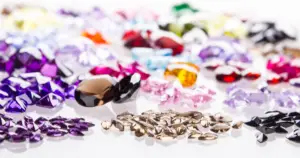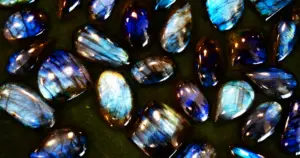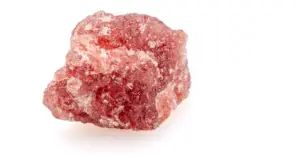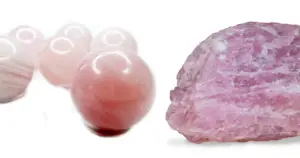How to Tell if Rose Quartz is Real or Fake in 6 Easy Ways
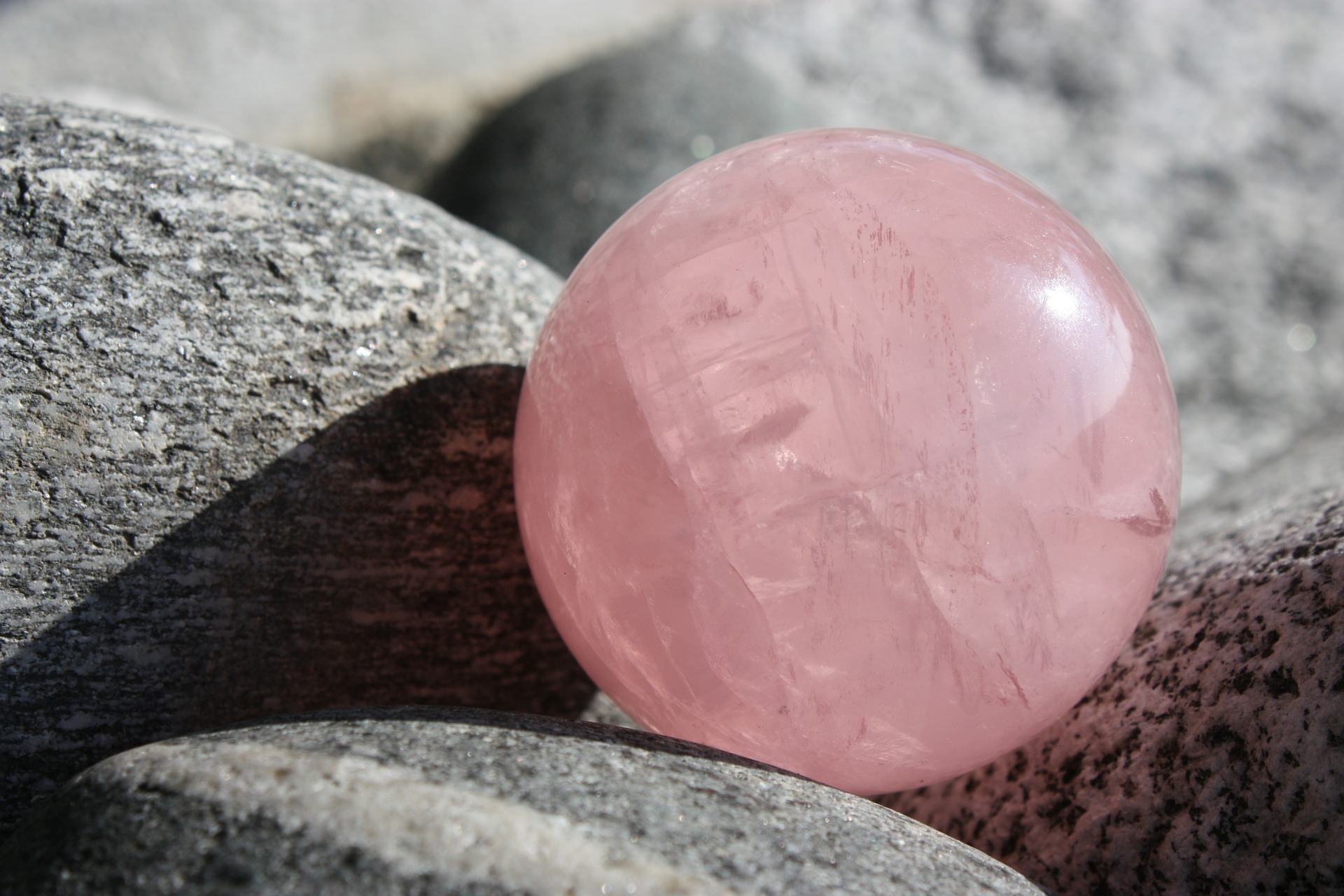
The Rose Quartz born in the earth’s rock pockets navel is a brilliantly pink member of the quartz family that occurs in large translucent masses. This beautiful pink Rose Quartz Crystal symbolises great love and helps mend broken hearts. Read this to know how to tell if a Rose Quartz is Real or Fake.
Before we proceed let us study a few properties of Rose Quartz for a deeper understanding.
The appearance of the Rose Quartz is never transparent, and it does not form crystal faces or crystals. Such a crystal variety is called cryptocrystalline; it is made up of many intergrown individual crystals.
The Rose Quartz is evidence of magma’s movement. As magma from the core of the earth makes its pilgrimage to the surface, not only does it move directionally, but also in energy:
- Losing its heat.
- Settling.
- Resting in recesses.
- Borrowing the substance of whatever it attaches itself to.
In one such formation, silicon mixes with oxygen to make quartz. When the cooling of this mixture happens to be intercepted by the presence of titanium, the clear quartz turns pink, giving us rose quartz.
One of the first few hurdles that beginners face in establishing a crystal practice is the procurement of genuine crystals.
The classic love Crystal, Rose Quartz, is legendary for its ability to heal heartbreak, attract new love, and open hearts to new forgiveness and compassion levels. However, the association of its characteristic candy-pink hue with tenderness might make it seem that this crystal is lightweight, which opens it to the possibility of several fakes.
Natural rose quartz is a product of magma cooling for several years, settling on rocks, and mixing with titanium impurities. In its raw, uncut form, it looks like a salt rock with no apparent crystal face. Synthetic Rose Quartz can be lab-grown, created by something called flux-growth, or made of glass and even plastic in such items as beads, wands, face rollers, etc.
More often, genuine rose quartz mined from the recesses of the earth is heated to enhance its color, which may sever us from the energies they hold. Aside from the price and look of crystals, some other things can help you figure out whether they are real or not.
There are a few tests and measures of precaution that you can do to be certain that what you’re purchasing is a gift from nature and not another product of human enterprise.
Read here some Interesting Facts about Rose Quartz.
Table of Contents
How to tell if a Rose Quartz is Real or Fake?
Observe the Shape and Crystallography
Rose Quartz occurs in pegmatites, which are coarse-grained igneous rocks. Due to this formation, Rose Quartz is almost always found as large specimens with no crystal edges, which are broken down into a vast variety of raw and polished shapes.
Rose quartz never forms crystal faces. If you are being sold a pink-colored crystal formation, it could be dyed quartz or a macrocrystalline kin of rose quartz, the pink quartz.
Rose Quartz as crystallized clusters are rare, expensive, and small, so if you see one sold relatively cheaply, it’s most likely dyed Quartz or Calcite – pretty, but not actually rose quartz.
Test for Hardness
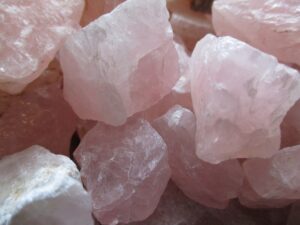
Natural crystals are far less fragile than synthetic ones. For instance, on a scale of mineral hardness that goes from 1 to 10, natural quartz is a 7.
This means that any formation that scored lower than that won’t be able to scratch or damage it.
You can test the fragility of your rose quartz (and most other quartz crystals) by running the following scratch test:
- Find your crystal on the Mohs hardness scale.
- Scratch your crystal with a mineral that is lower than it on the scale (most readily available: glass)
- If it gets damaged, you’ve received something that was made in a lab
Tip: Make sure the crystal you are scratching isn’t a softer natural crystal. Each crystal on the Mohs scale can be scratched by itself or any crystals above it. No crystals can be scratched by any below it on the scale.
If your crystal has sharp edges, you might also choose to test the hardness by using it to scratch glass or plastic. Most real crystals will leave a scratch mark on those materials.
Check for the Weight of the Crystal
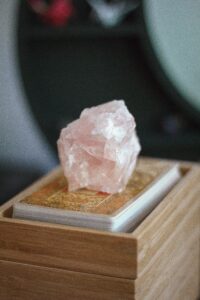
Natural crystals are heavier than fakes. This is because true crystals contain more lead than synthetic formations and thus will be denser and heavier.
Rose quartz is typically heavier than glass. So, if you are new to the crystal world, the easiest way to examine whether you have a natural crystal or not is to test the weight next to glass pieces of a similar size.
If the crystal you’re holding or measuring on a scale is lighter or the same weight, there is a very high likelihood that you’ve acquired a fake.
Observe the Pattern and Distribution of Color
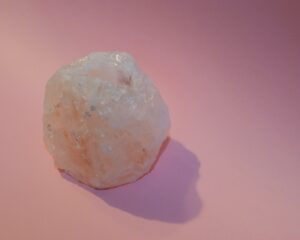
Since Rose Quartz is the product of the presence of titanium impurities at the time of quartz formation, crystal colors can vary from very bright pink to almost pale purple, depending on the peculiar concentration of titanium in certain areas, kind of tectonic pressure, and darkness.
On any given rose quartz crystal, the color is fairly evenly spread.
Natural Rose Quartz crystals are never entirely transparent, so if your crystal is carved into a see-through wand or hexagonal shape, it is more likely to be glass.
Rose quartz is a commonly heat-treated stone since it gains a recognizable darker color after the treatment.
Look out for unnatural colors or patterns that are perfectly symmetrical. An intensely pink Rose Quartz, with no inclusions, for instance, is likely a fake.
Note: Heat-treated crystals aren’t necessarily considered fake, and they do contain healing properties since they are real crystals. Dyed ones are different, however. Very intense, unnatural colors recognize dyed and chemically treated crystals.
The most effective way to test the color is to rely on online sources when you compare images of crystals you find on credible websites that can help you figure out whether what you are holding is real or not.
Read here some of the exquisite Rose Quartz Affirmations.
Perform a Drop Test and Check for the Temperature
Real Rose Quartz can shatter when dropped and are immune to scratching, which makes them one of the more valuable gemstones.
Rose Quartz is refreshingly cool to the touch. It is therefore typically carved as wands or rollers to be used in traditional massages or reflexology techniques. Hence, it is likely not to be accurate if your Rose Quartz face roller is hot or doesn’t cool down quickly after contact.
If you already have a Rose Quartz crystal, is it cold or warm?
Natural quartz should still be cool to the touch, even on a scorching day. However, some of the gems used in fake Amethyst or other Quartz rollers like marble can also be cool to the touch, so the temperature isn’t always a safe way to determine if it’s fake.
Ask for the Price
Lastly, the price of a crystal is often a good giveaway of its originality. If it is ridiculously cheap, ask yourself why is it being sold at that price.
Rose quartz crystals formed in the deep recesses of the earth are laboriously geolocated, sourced, and mined by skilled craftspeople.
In establishing a relationship with the earth, we cannot be severed from the labor of those who produce it. An ethically mined real crystal will carry not only the labor of the earth’s energies but also of those who make it available for us and would be priced as such.
Final Thoughts
Rose quartz is one of the most widely known and used quartz crystals. Its capacity to usher in love and calm are greatly valued.
Attaching to and mobilizing crystal-like rose quartz for healing allows us to devise a tangible language for the immateriality of the soul but also confront how we are not like a rock; our body is not what is done to it; it is the energies it is invested with.
Due to its increased demand in the last few years, it has been very readily faked. This cloudy pink crystal formation, however, does not lend itself too easily to fakes. It is fairly easy to identify and weed off fakes if you attend to the stone with the totality of your sensorium.
In this article, we have explained six such ways: the shape in which your crystal is being sold, its hardness, color, and temperature, being some of the most tactile ones of the lot.
Due to the burgeoning of online crystal stores in recent years, a lot of the buying happens through a screen and does not allow for the kind of extended contact with the crystal that these tests demand.
In that case, it helps to verify your seller, inquire about the geographical origins of your crystals, and see if the price matches the claim.
